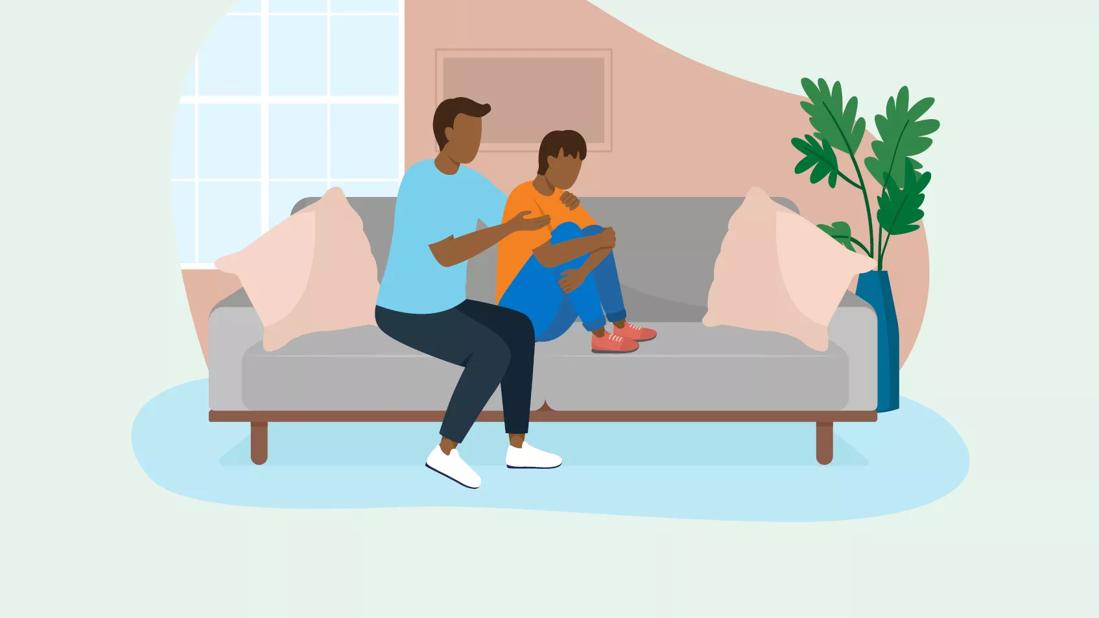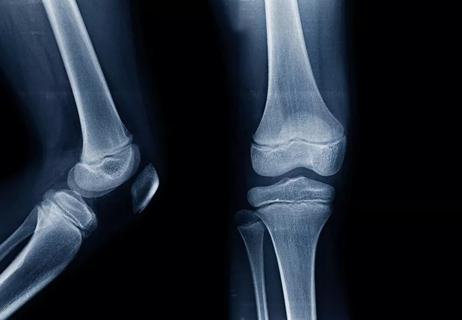Advertisement
You can treat these short-lived symptoms with a warm bath or massage

Growing pains in kids tend to grab the attention of parents. Unexplained suffering of your child in the middle of the night just has that effect.
Advertisement
Cleveland Clinic is a non-profit academic medical center. Advertising on our site helps support our mission. We do not endorse non-Cleveland Clinic products or services. Policy
These alarming aches can appear suddenly and intensely in sleeping children, with pain levels often registering high enough to jolt them awake. Screaming and tears aren’t uncommon reactions.
Thankfully, the pain typically disappears quickly and without any lingering issues … but that doesn’t mean there aren’t a few curious questions about what happened.
Let’s get some answers from pediatric physical medicine specialist Lainie Holman, MD.
Growing pains are often described as a short-lived cramping or throbbing pain, most often (but not always) in the legs. The sporadic aches usually rear up at night without any warning. They’re very common, too.
And with all of that being said, growing pains are also very misunderstood and loosely defined. It seems folks use the term to explain many signs of discomfort.
There’s no clarity in medical research regarding a cause for growing pains, either.
“Any explanation of growing pains is usually very broad,” says Dr. Holman. “We know they happen, of course, but there’s a lot of inconsistency on how growing pains are reported and the associated factors.”
By some estimates, nearly half of all kids experience growing pains at some point during childhood — usually between the ages of 3 and 12. It doesn’t seem to have a prevalence in boys or girls, either, says Dr. Holman.
Advertisement
The honest answer? We don’t really know.
The name itself appears to be a misnomer, as there’s no evidence that a sudden growth spurt kick-starts the pain. The unexplained aches do appear during ages when kids grow like weeds, though.
“It’s associated with growing because it comes at a time when people are growing the most, but it doesn’t seem to have anything to do with actual growth,” notes Dr. Holman.
For the record, the term “growing pains” originated in 1823 in a book titled Maladies de la Croissance (which translates to “Diseases of Growth”). French physician M. Duchamp coined the phrase.
To be more accurate these days, physicians have tried using names like “benign nocturnal limb pains of childhood” or “recurrent limb pain of childhood.” Those monikers don’t seem quite as catchy as the original.
Growing pains often follow busy days of kids running, jumping, playing and just being … well, kids. “That lends credence to theories that there is some sort of musculoskeletal or muscle fatigue underlying the pain,” says Dr. Holman.
Again, though, there’s no real scientific evidence to link activity to growing pains. Plus, the truth is they can appear after inactive days, too.
Growing pains typically zero in on the legs — and it could be anywhere from your waist down. The cramping may zing your child’s thighs, for instance. The aches could settle in their calf or shin. Or maybe behind the knee.
“Most of the time, the location is pretty random,” says Dr. Holman. “What’s described as growing pains don’t just appear in one area.”
Aside from the legs, growing pains may also pop up as:
Growing pains have just one symptom. “It’s just pain that’s episodic, so it self-resolves,” states Dr. Holman. “It doesn’t come with fevers, rashes or chills.”
The good news is that growing pains often disappear within five to 10 minutes … though, that’s certainly not quick enough for any parent watching their child suffer. “Seeing our child in pain in the middle of the night is scary,” says Dr. Holman. “Being brief doesn’t make it less alarming.”
To help your child find relief, Dr. Holman offers these suggestions.
Advertisement
If growing pains continue for several nights in a row or are focused on one particular spot, a call to the pediatrician is reasonable, says Dr. Holman. They may want to check for an injury or some other cause of the pain.
Make an appointment, too, if there are other symptoms like fevers, rashes, weight change, mood swings or new trouble in school.
“Don’t just assume that it’s growing pains if there is much more going on,” advises Dr. Holman.
There’s only one known way to prevent growing pains: Age out of them.
“It’s a part of childhood for many people,” reassures Dr. Holman. “As long as the pains aren’t interfering with your child’s ability to function with school or sports or around the house, there isn’t any reason to be alarmed.”
Advertisement
Learn more about our editorial process.
Advertisement

Facts on nighttime pain from a pediatrician

Start with a few minutes a day and work your way up to an hour or more to help your baby hit developmental milestones

Encourage your child to ignore the bully, seek help from an authority figure and stay with a trusted group of friends

Practicing mindfulness, building healthy relationships, establishing boundaries and seeking therapy can all help

This important activity helps babies reach developmental milestones like rolling, sitting up and crawling

Getting close to their care team, investing in accessibility and implementing safe sleeping practices are just a few ways to support your child’s growth and development

Your child’s care team, nonprofit organizations, patient groups and more are here to support you

Golden children often deal with perfectionism, low self-esteem and strained relationships as adults

If you’re feeling short of breath, sleep can be tough — propping yourself up or sleeping on your side may help

If you fear the unknown or find yourself needing reassurance often, you may identify with this attachment style

If you’re looking to boost your gut health, it’s better to get fiber from whole foods